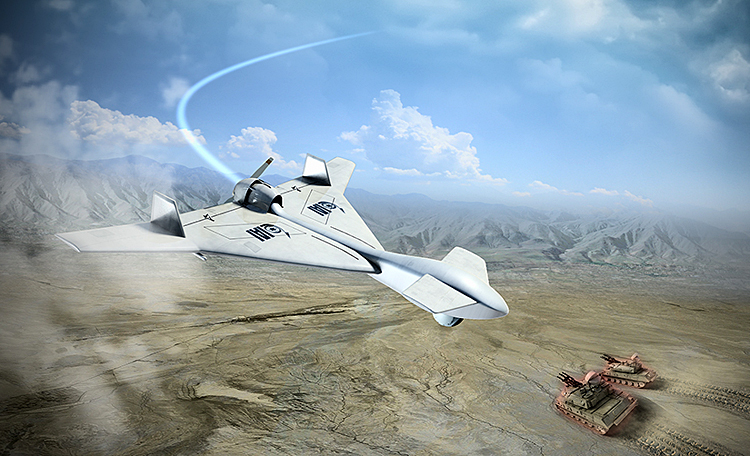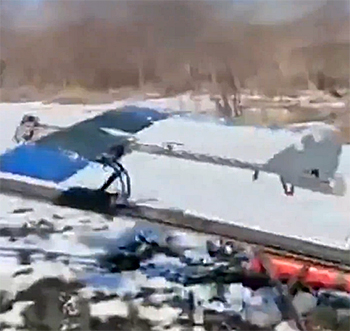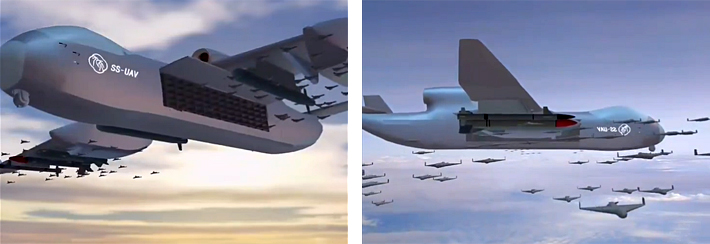INDIAN ARMED FORCES CHIEFS ON OUR RELENTLESS AND FOCUSED PUBLISHING EFFORTS

The insightful articles, inspiring narrations and analytical perspectives presented by the Editorial Team, establish an alluring connect with the reader. My compliments and best wishes to SP Guide Publications.

"Over the past 60 years, the growth of SP Guide Publications has mirrored the rising stature of Indian Navy. Its well-researched and informative magazines on Defence and Aerospace sector have served to shape an educated opinion of our military personnel, policy makers and the public alike. I wish SP's Publication team continued success, fair winds and following seas in all future endeavour!"

Since, its inception in 1964, SP Guide Publications has consistently demonstrated commitment to high-quality journalism in the aerospace and defence sectors, earning a well-deserved reputation as Asia's largest media house in this domain. I wish SP Guide Publications continued success in its pursuit of excellence.
- A leap in Indian aviation: Prime Minister Modi inaugurates Safran's Global MRO Hub in Hyderabad, Calls It a Milestone
- All about HAMMER Smart Precision Guided Weapon in India — “BEL-Safran Collaboration”
- India, Germany deepen defence ties as High Defence Committee charts ambitious plan
- True strategic autonomy will come only when our code is as indigenous as our hardware: Rajnath Singh
- EXCLUSIVE: Manish Kumar Jha speaks with Air Marshal Ashutosh Dixit, Chief of Integrated Defence Staff (CISC) at Headquarters, Integrated Defence Staff (IDS)
- Experts Speak: G20 Summit: A Sign of Global Fracture
Reign of Drones
Ukraine's Operation 'Spider's Web' demonstrates the rapid advances in technology and innovative thinking and marks a turning point in how low-cost, improvised unmanned systems can be employed with strategic impact deep behind enemy lines
 |
The Author is Former Director General of Information Systems and A Special Forces Veteran, Indian Army |

Operation 'Sindoor' has underlined India's supremacy over Pakistan in the military field. Both sides deployed not only surveillance drones but also armed UAVs and loitering munitions, with India reportedly using Israeli HAROP and Polish WARMATE drones, while Pakistan relied on Turkish-origin YIHA-III, Asisguard Songar, and domestically produced Shahpar-II UAVs. Drones deployed by Pakistan were effectively destroyed with near 100 per cent kill rate. India is accelerating indigenous drone technology, with plans to spend up to $470 million on UAVs in next 12-24 months; three times pre-conflict levels. The $4.6 billion for emergency military procurement includes a significant portion earmarked for combat and surveillance drones. However, India relies on Chinese-made components like magnets and lithium for UAV batteries; requiring diversification of supply chains.
India is accelerating indigenous drone technology, with plans to spend up to $470 million on UAVs in next 12-24 months; three times pre-conflict levels
The US Army recently did a Brigade-level exercise in Europe and got a 300 per cent productivity increase using small drones. The US has also cancelled its new tank programme; indicating a switch from 'big and expensive' manned platforms to a porcupine of short/small to long/large range/payload drones in all domains. It is also interesting to note that Russia is flying drones into Ukraine at higher altitudes, forcing Ukraine to use F-16s against them, since truck-mounted AA guns cannot target them. But Ukraine's programme to develop thousands of fast 2-4 kg drones to counter Russian drones is gathering momentum.

Ukraine's Operation 'Spider's Web' against Russia on June 1, 2025, has brought a strategic dimension to drone warfare. The plan no doubt was audacious and covert, striking deep inside Russia, albeit it was with US-NATO support, intelligence and communication support with full knowledge of the CIA (read the US). Two of the five Russian airbases struck by Ukraine were Olenya and Belaya, which are around 1,900 km and 4,300 km from Ukraine. The first is located in the Russian Arctic and the other in Eastern Siberia. Ukrainian President Volodymyr Zelensky's claims of impacting 34 per cent of Russian strategic cruise missile carriers stationed at air bases was highly exaggerated. The drone attack supposedly destroyed/damaged over 40 strategic bombers, including Tu-95s, Tu-22s, and A-50 early-warning aircraft. But reports suggest five Tu-95 strategic bombers plus one transporter were destroyed. No A-50 early-warning aircraft was hit, plus the attack on only two bases succeeded and the other two failed. Selecting targets was easy for putrid brains because strategic nuclear bombers of Russia and America must be visible to satellites under the US-Russia START Treaty. By using Zelensky, the US-NATO has avoided direct blame for crossing Russia's nuclear redline.
Ukraine's Operation 'Spider's Web' against Russia, has brought a strategic dimension to drone warfare

Ukraine used NATO-supplied satellite data and ISR (intelligence, surveillance, reconnaissance) to identify the exact positions of Russian bombers, gaps in radar coverage, and safe launch zones deep inside Russia. For the attack, Ukraine adopted a hybrid approach by combining remote human control with elements of autonomy and potentially AI-assisted functionality in the attack. The drones used a software-hardware system built around 'ArduPilot'; an open-source autopilot framework designed for UAVs. Each drone was integrated with a compact onboard computer, connected to a webcam and an LTE modem via Ethernet. The camera feed was used for visual navigation, while control signals were routed through ArduPilot. AI supported both the flight stability and targeting, particularly in enabling precise strikes on vulnerable components of high-value aircraft. FPV drones were possibly controlled through Russian mobile telecommunications networks, including 4G and LTE connections, allowing Ukrainian operators to manage drone flights from outside Russian territory.
Ukraine has demonstrated that inexpensive FPV drones, also being developed as cottage industry in Ukraine, provide a cost-effective alternative as a more lethal, incisive and penetrative attack option without endangering human lives. It marks a turning point in how low-cost, improvised unmanned systems can be employed with strategic impact deep behind enemy lines. It also demonstrated the growing use and efficacy of AI in one-way attack FPV drones using simple algorithms trained on very specific datasets. US Army Chief of Staff General Randy George said at a conference, "We're going to have to be more agile. Drones are going to constantly change. Ukraine's attack was a really good example of just how quickly technology is changing in the battlefield." Ukraine has also been launching drone attacks on the Kerch Bridge connecting the Taman Peninsula of Krasnodar Krai in Russia and Crimea. Ukraine has also been deploying underwater drones for attacking Russian assets.
India needs to develop state-of-the-art AI-driven capabilities and build advanced indigenous robots and drones
Ukraine's Operation 'Spider's Web' demonstrates the rapid advances in technology and innovative thinking in bypassing Russia's vast AD network, which is transforming the battlefield. But the future may hold a lot more surprises with AI being optimised more and more in drone warfare. Interestingly, Ukraine has been deploying drone-carrying "mothership" drones for the past several months; providing extended strike range. The newest Ukrainian aerial mothership, the StratForce Gogol-M, was deployed in April 2025. The propeller-driven, catapult-launched Gogol-M can carry two FPVs as far as 300 km; a $10,000 mission has replaced what previously required $3-5 million missile systems. Now, Russia has apparently reverse engineered Ukraine's "mothership" drones and produced its own "mothership" drone, named 'Molniya', first sighted on June 4, 2025. In its present state, the Molniya has a range of 40-km. It can launch its FPV, relay the FPV's radio signal back to the drones' operators, and after the FPV has struck its target, the Molniya can also strike a target.

What has happened in Russia in Operation 'Spider's Web' is as much applicable at sea as well; in our context in the Indian Ocean - sub-surface, surface and aerial threats. Notably, China has announced the launch of a 'flying aircraft carrier' that can carry a swarm of drones for 7,000 km. In June 2025, China is scheduled to launch its 'Jiutian SS-UAV', a drone with a 25-meter wingspan, take-off weight of 15 tonnes and a payload capacity of up to six tonnes. Jiutian SS-UAV will become an airborne headquarters for controlling hundreds of drones, conducting reconnaissance and striking targets at long distances. China also has substantial capability in sub-surface and surface drones at sea. Navies will need to evolve tactics and exploit the potential of shifting their medium of operations to underwater, air, space and have better stealth features in terms of smaller ships constructed using material which avoids radar and electronic detection, as well as having solutions for effective defence against hypersonic weapons, lasers and drones.
Finally, our policy makers, the Indian Armed Forces and the industry are obviously monitoring these developments and drawing lessons for enhancing India's combat power in this field. We need to develop state-of-the-art AI-driven capabilities and build advanced indigenous robots and drones. At the same time, we must be fully geared at all times to combat tech/AI-driven terrorism from across the border, especially from Pakistan and Bangladesh, as well as from within the country.





